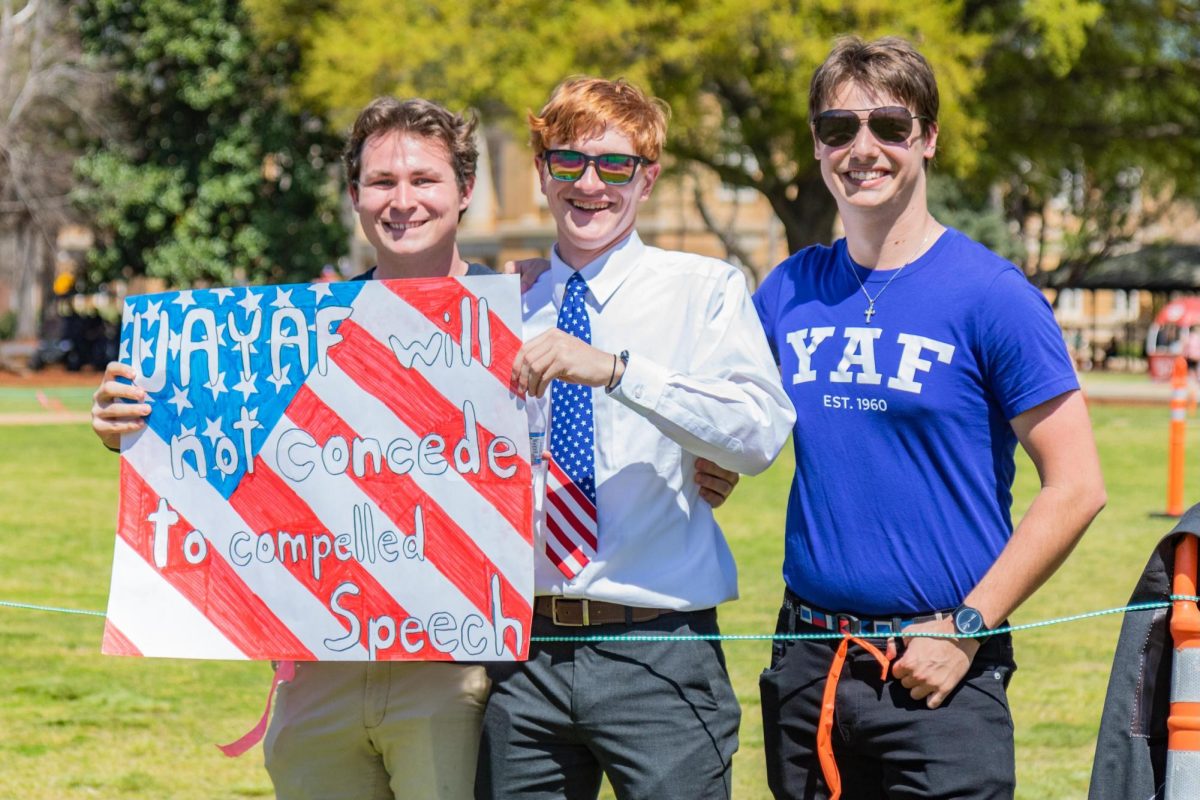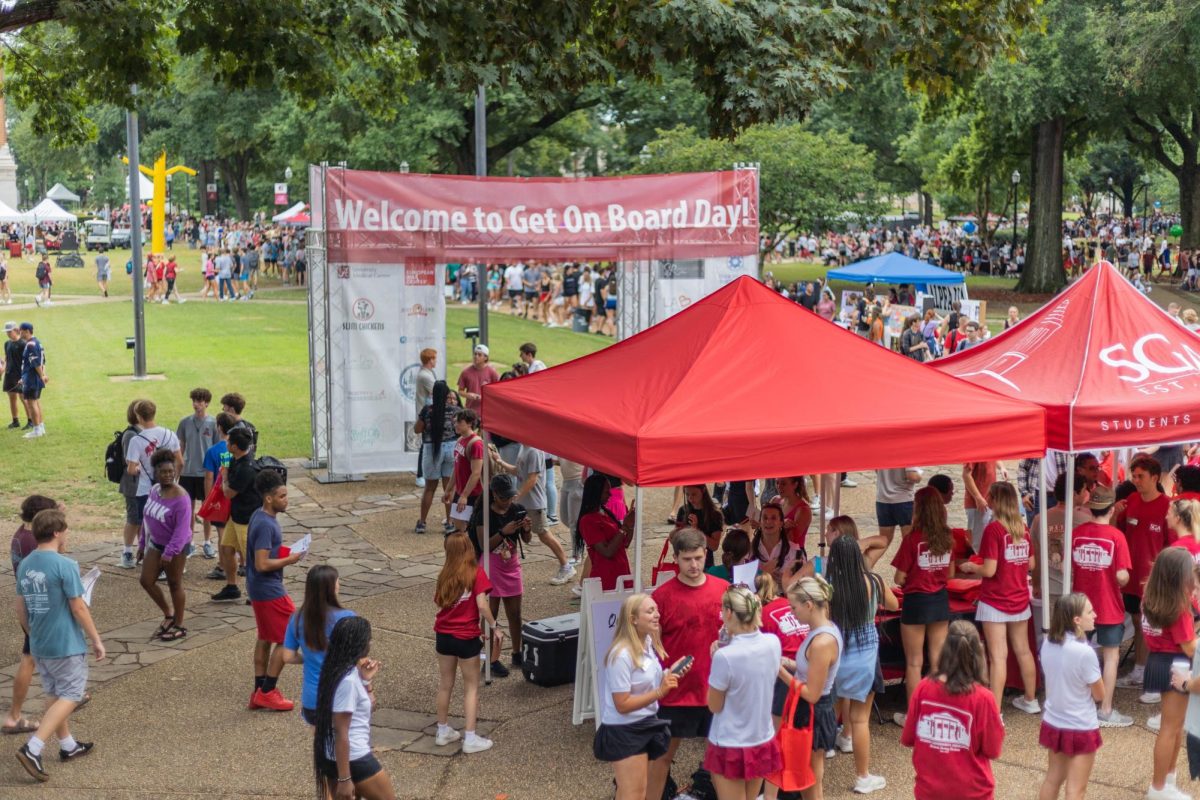As I was walking out of Reese Phifer last week, I saw a large message on its steps written in chalk. It simply said, “JFY – Will you go to formal with me? – KCP.” I smiled, thinking to myself that this was a cute, although obvious, way to utilize the sidewalks of this university.
Shortly beyond that one, there was a chalking that urged me to give my vote to Anna Foley for Homecoming queen. However, unlike the one written by Mr. KCP, this message multiplied. As I continued to walk, I saw another Homecoming queen advertisement, and then another. They seemed to grow such that by the time that I had reached B.B. Comer, I was absolutely surrounded by endorsements. Literally, not a single brick on the walkway was left unchalked.
Chalking, when taken by itself, is a major asset to this university. I appreciate the ability to be informed of my options with minimal effort. Beyond being a great way to get the word out and giving students something to read while walking between buildings, it also adds to campus life.
Unfortunately, the normal chalking to which I was accustomed largely vanished overnight. Where I expected to see a few scattered advertisements for the Atheists and Agnostics Club or the Navigators, there suddenly was the utter chaos of a homecoming queen race. I was disgusted by this method of campaigning, which is almost as immature as it is annoying.
Don’t get me wrong; I believe that the homecoming queen is an incredibly important tradition at this university. I most certainly plan to vote and am resisting the urge to insert a shameless plug, but overrunning the campus with chalking, regardless of whether it is for homecoming queen or something else, is simply unreasonable. This specific case verges on ridiculousness for several reasons.
First, where is the benefit for the candidates themselves? Some advertising through chalking does indeed go a long way in terms of name identification, but that is only beneficial to a certain point. The extent to which some of these fine ladies have gone in chalking goes beyond simply informing the student body that they are running; it beats them over the head with the fact. Besides being annoying, writing a name two hundred times instead of twenty probably won’t garner any more votes.
Second, it drowns out student organizations, such as foursquare leagues and other groups who might want to advertise freely. Soon after the beginning of homecoming queen season, I stopped seeing advertisements for various groups, honor societies and events. This was not because they ceased to exist. The homecoming queen chalking simply smothered them. Any attempt by others to get their information out is buried under a veritable mountain of homecoming advertisements and as a result, people tend to ignore the sidewalks altogether.
Finally, these chalkings diminish the beauty of our fine campus. One of the university’s major assets is its campus and given the large amount of visitors that it receives, whether through recruitment, game days, or other events, a good-looking campus is an absolute necessity; however, the overflow of chalking makes the campus look like a billboard. It is almost embarrassing to see that our campus has been colored upon like a paper tablecloth at Applebee’s.
Some people have agreed with me and are fighting against this blight under the name of Students Against Chalking. No, they are not washing off the sidewalks, which would be a classless action to take. They are fighting the problem of chalking with, well, writing in chalk.
Yes indeed, the savior of our sidewalks is fighting fire with fire by writing “Join Students Against Chalking” all over the campus. Quite frankly, these actions are not helping. In fact, I struggle to see a real purpose in that practice. Perhaps the only real solution is to simply wait. Eventually, the writings will fade away, which will hopefully allow a return of both sanity and visible sidewalks to this place. In the meantime, good luck to all of the candidates and KCP, I hope she said yes.
John Brinkerhoff is a freshman majoring in political science and communication studies. His column runs biweekly on Mondays.








